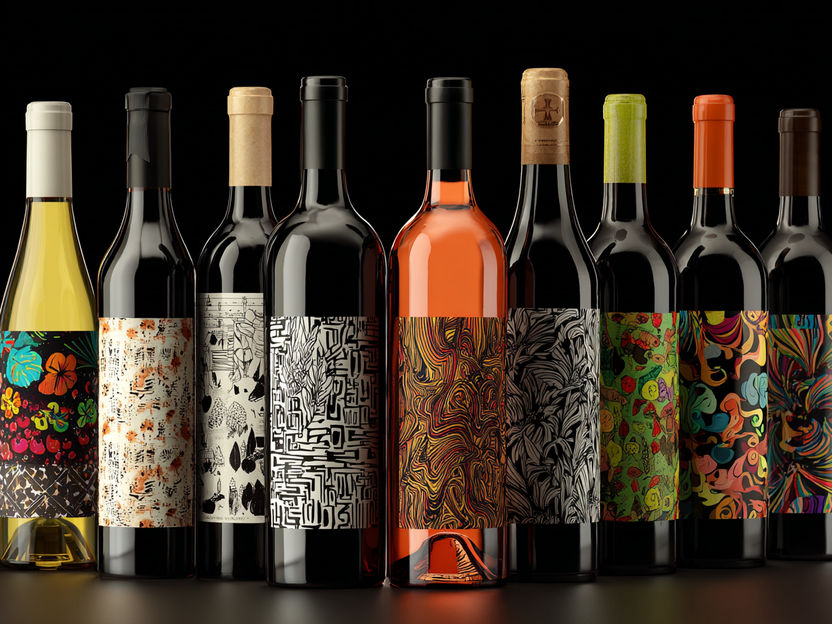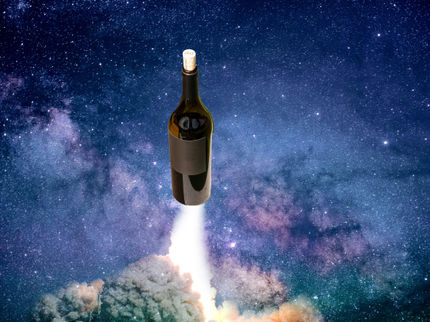New study: The label determines the taste and price of wine
Consumers are influenced not only by the look of the wine label, but also by its feel.
Advertisement
It's not just the content that counts, but also the surface. Anna Nutta's master's thesis from the International wine Marketing master's program impressively demonstrates that the haptic experience of a wine label can have a significant influence on how a wine is expected and judged. If you want to position your wines in a holistic sensory way, you should not only pay attention to color and font in the future - but also to the feeling in your hand.

Symbol image
AI-generated image
The experiment
The study was carried out on site at the Burgenland University of Applied Sciences in Eisenstadt. 71 consumers interested in wine took part, 60% female, 40% male. The labels were experienced haptically using the so-called "blind touch" method - i.e. exclusively by touch, without visual or content-related information.
Three different label materials were tested: smooth & glossy, rough & embossed (embossing) and matt with a textile-like surface (velvety).
Participants: Regional, young & with an affinity for wine
The age structure of the participants was heavily dominated by young people: More than half (54%) were under 30 years old, with a further 28% aged between 30 and 44. Around 16% were in the 45 to 59 age group, and only one person was over 60 years old. The results therefore primarily reflect the perspective of a young, wine-loving target group.
The origin of the participants was clearly eastern Austrian and therefore a realistic reflection of the target group for many wineries in the region. Around 42% came from Burgenland, a further 20% from Lower Austria and around 19% from Upper Austria. Salzburg and Tyrol were represented with 8% each, while Carinthia was only sporadically represented with just under 3%.
Key findings of the survey
60% of the participants are low-involvement wine consumers - i.e. people with little wine experience and low involvement when buying wine. Nevertheless, the study showed that the effect of label haptics on taste expectations was independent of involvement.
Haptics influence everyone
"Haptics influence everyone, whether wine connoisseur or occasional drinker. This finding is particularly exciting: we were able to show that the haptic experience of a label alone shapes the perception of the taste of a wine - even before the first sip is taken. Producers can therefore emphasize the value of a wine with haptically designed labels," explains Bettina König, supervisor of the Master's thesis.
- Smooth label: was clearly associated with fresh, fruity white wines
- Velvety label: particularly often evoked the idea of full-bodied red wine - regardless of wine interest or experience
- Embossed label: triggered associations with the complexity and high quality of a wine - with a significantly higher willingness to pay of up to +15%!
Practical relevance
The results provide clear recommendations for wine marketing and label design:
- Smooth labels are suitable for modern, youthful white wines
- Velvety labels appeal emotionally and work particularly well in the red wine segment
- Embossed labels suggest high quality - ideal for the premium segment
Ms. Nutta's work is an excellent example of how we promote interdisciplinary thinking - between sensory marketing, consumer psychology and wine knowledge - in our International Wine Marketing course. We enable our students to play an active role in shaping the future of the wine industry - scientifically sound and practice-oriented.
Note: This article has been translated using a computer system without human intervention. LUMITOS offers these automatic translations to present a wider range of current news. Since this article has been translated with automatic translation, it is possible that it contains errors in vocabulary, syntax or grammar. The original article in German can be found here.




























































